Chasing one of Appalachia’s most vibrant trail markers
I have been traveling the back roads of Tennessee, Georgia, and North Carolina in search of seasonal treasures- not in the usual sense of treasure, but the treasures of nature, wildlife, and the great outdoors. It’s true what they say in photography, “You never know unless you go.” Often, this phrase has summed up my experiences not only in photography but life as well. I’ve waited for bears, watched for meteors, and also chased clear skies across states for a total solar eclipse. Results are never guaranteed, but you can bet that not even trying will leave you clueless, wondering, and empty. Adventure is out THERE. It is probably, most assuredly, not HERE.
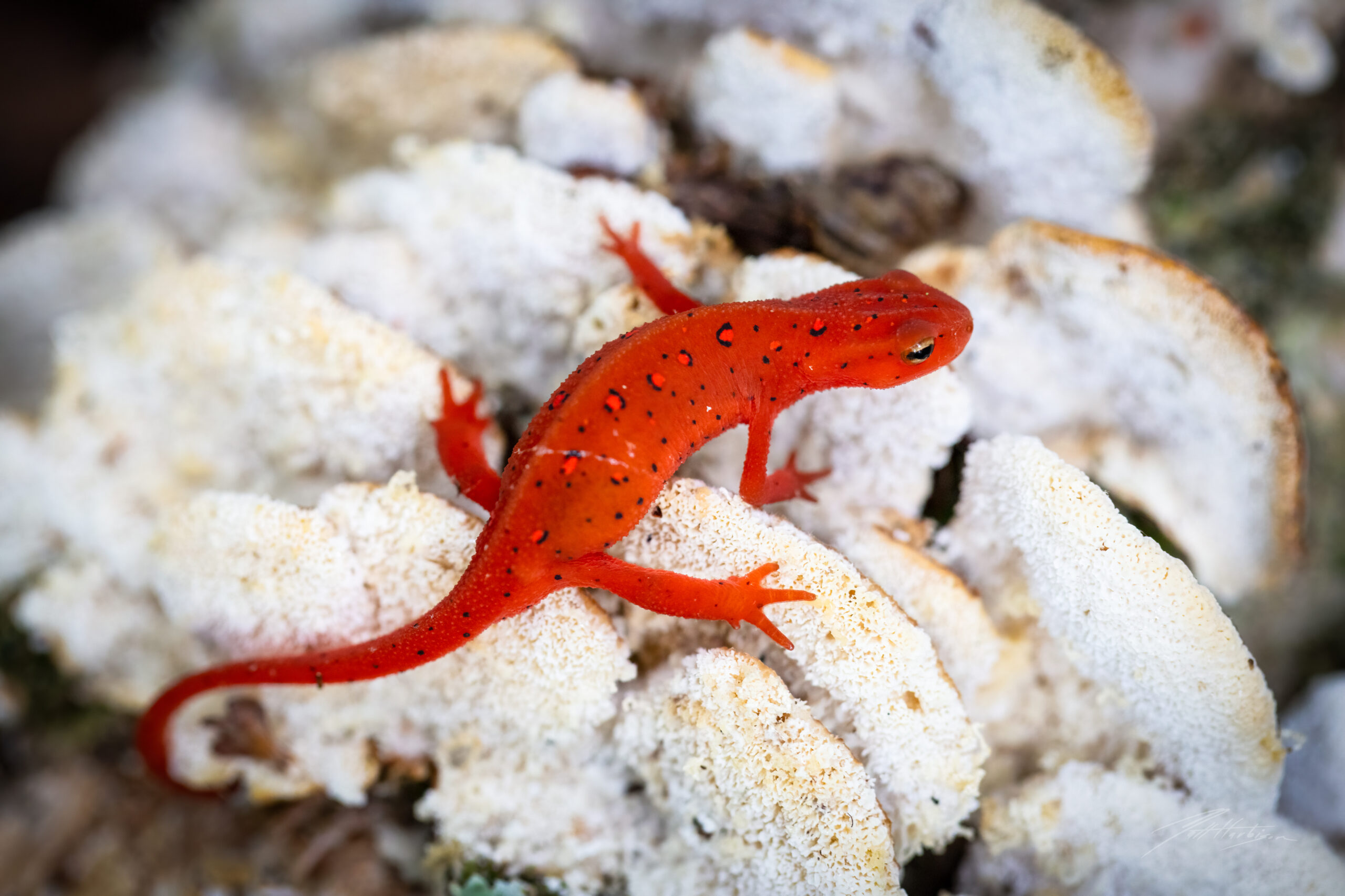
Once more into the fray
This weekend, one of my friends and I set out in search of the tiny Eastern red-spotted newt. This wasn’t our first trip searching for them. We’ve been systematically testing trails in an attempt to find them, although I’m not so sure a hot muggy day isn’t the secret. Earlier trips were a bust. This trip was finally a success. Below, you see one of the newts proudly standing tall on the trail. They are easy to miss.

Trampled Under Foot
These salamanders are easily one of the most unique creatures likely to travel with you on the Appalachian Trail. It’s easy to dismiss the subject of this blog post as a tiny, insignificant creature with no bearing on life, but I think there might be more to this tiny, vibrant trail marker than meets the eye. Also referred to as the red eft, these tiny creatures pack a big punch. With their vibrant orange coat and red spots, they possess a neurotoxin that, when ingested, can cause severe problems for any nervous system belonging to the would-be predator.
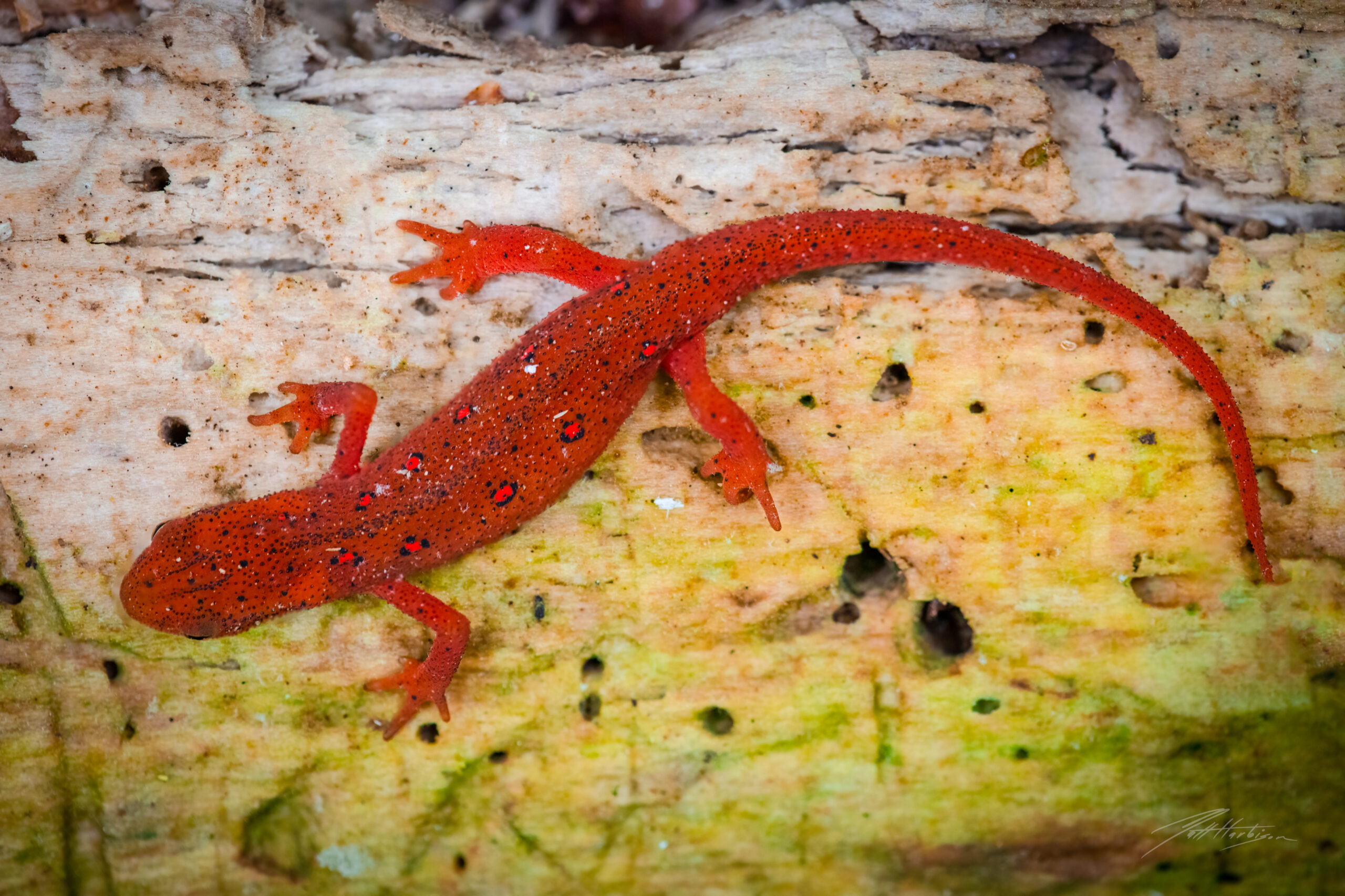
Numerous but Hidden
These 1-inch salamanders can appear across the Appalachian mountains, depending on the season, location, and abundance of rain. The tiny little travelers can live up to 15 years with most adults averaging between 3-8 years of age. The adults travel away from their home water source to lay their eggs in leaf litter and damp areas. The juveniles are hatched out of water with a clutch of 200-375 eggs and then use a magneto reception system to return to the very place their parents once lived. (Click here to read more about magneto reception in Eastern newts.). As the newts age, they eventually will leave these bodies of moving water (just as their parents did) and have their own progeny to begin the cycle anew.
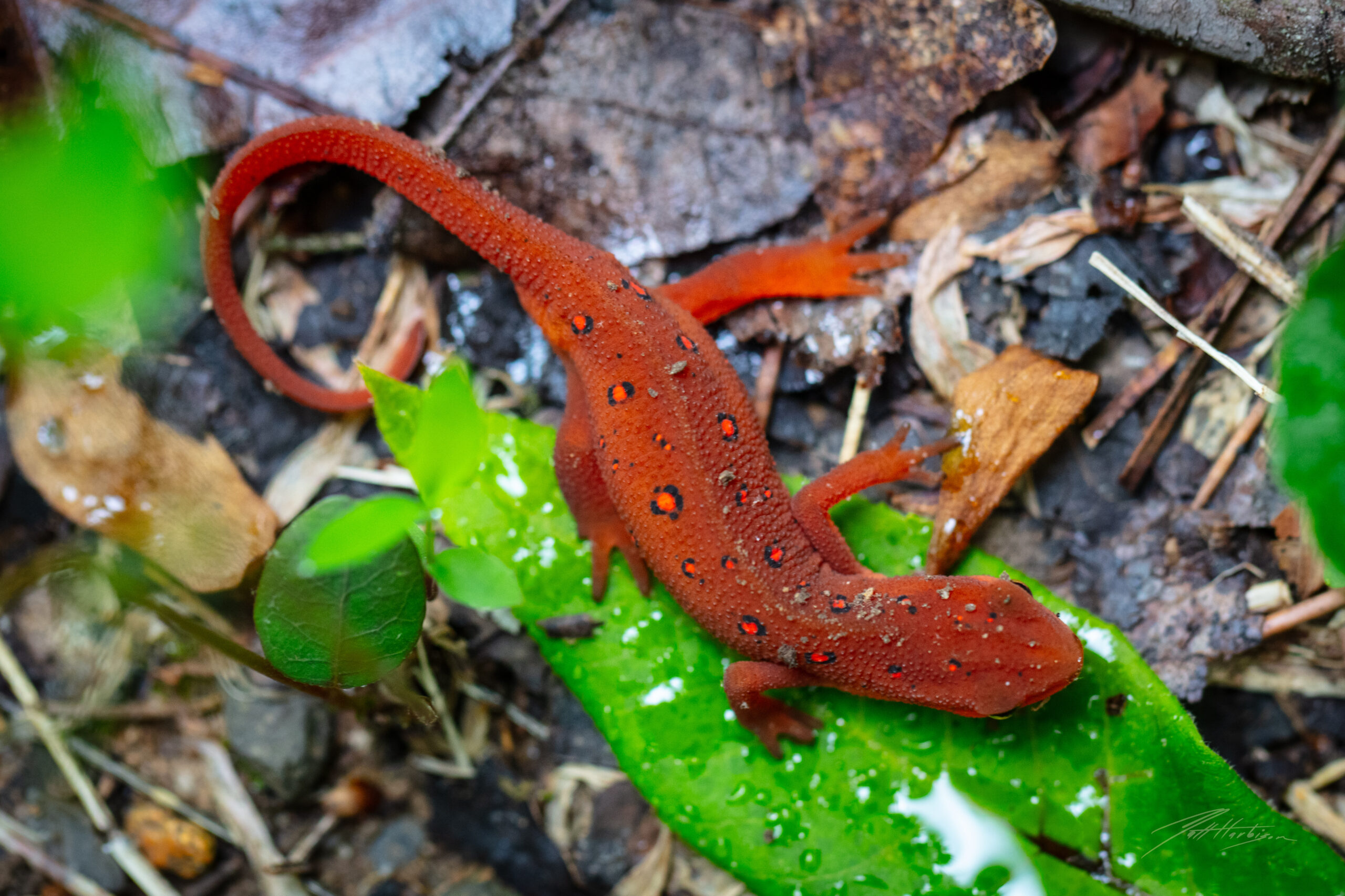
Red Means Stop!
Across the Appalachian Trail, these tiny creatures are often trampled under foot, but also provide a spectacle of nature’s vibrant colors. As the second most abundant salamander in the world, this tiny creature touts an impressive array of adaptability. Previously mentioned, the skin of the newt contains tetrodotoxin, a neurotoxin that when ingested can cause serious issues in the nervous system.
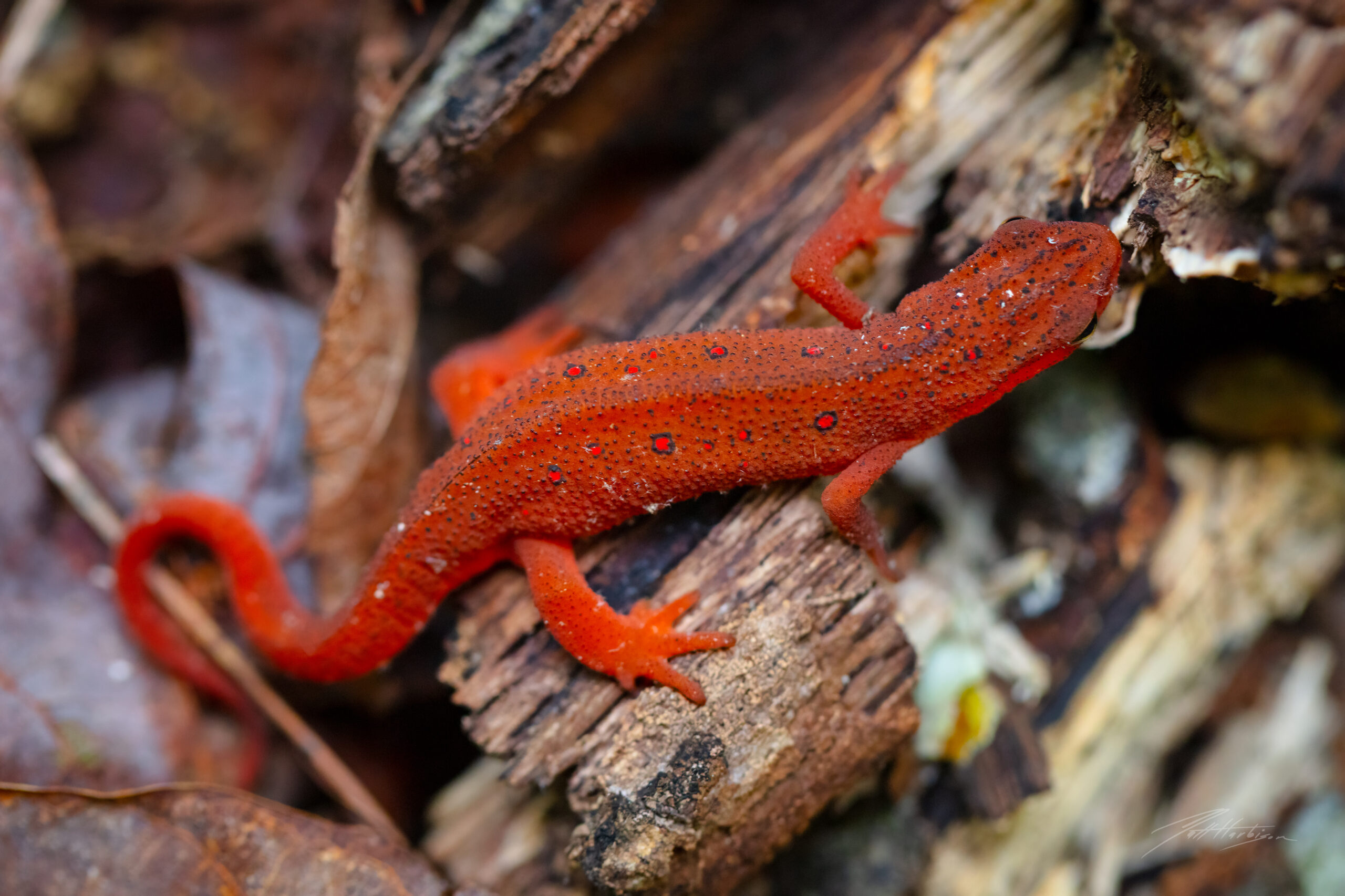
Unkenreflex – That’s a fun word!
Secondly, the newt is one of the few animals that will display an unkenreflex. By curling its tail and body, it prominently displays its bright red spots as a WARNING for any potential predator. Hence, the tiny sentinels will proudly walk out in the open lending to their discovery. And finally, depending on where you encounter these newts in the Eastern US, you may find them in a completely different stage of life. After my research, I’ll be attempting to photograph each stage now. This display of different life stages is referred to as neoteny and it is a species’ ability to completely skip or delay a stage of life depending on the resources available. In some cases the Eastern newt has been observed to skip the eft stage completely. This makes the Eastern newt one of the most adaptable species in the forest.
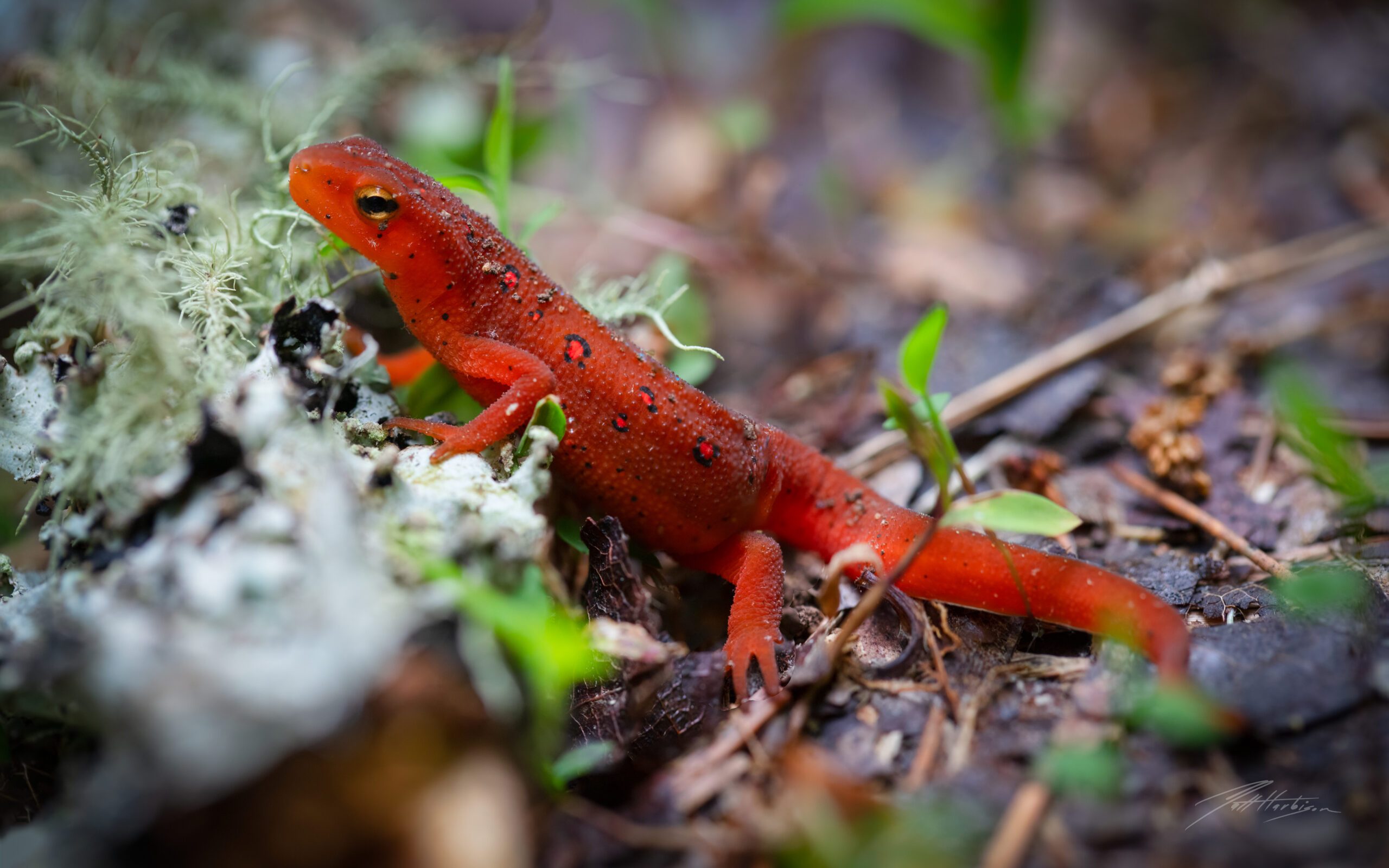
Focus Stack of the Eastern Red-Spotted Newt
The Shot!
So after three different trips to photograph these tiny magnificent creatures, we finally had some luck. While season plays a part, I also want to believe today’s humidity and warm morning temperatures had a huge hand in getting these little ones out of their hiding places.
I hope you’ve enjoyed the nature and science lessons, and I hope you decide to go see it for yourself! Incidentally, if you get out to the Ocoee region in search of the Eastern red-spotted newt, make sure to stop at the Ocoee Dam Deli and Diner. Great food and good people. Best fountain soda around! If you don’t like it, they’ll let you cook your own dam food. 🙂

Research:
More on the Eastern red-spotted newt
https://www.virginiaherpetologicalsociety.com/amphibians/salamanders/red-spotted-newt/index.php
More on Magnetoreception
https://www.sciencedirect.com/topics/earth-and-planetary-sciences/magnetoreception
More on the Importance of the Eastern red-spotted newt
https://news.mongabay.com/2018/12/super-spreaders-how-the-curious-life-of-a-newt-could-ignite-a-pandemic/
Ocoee Dam Deli & Diner
https://www.tripadvisor.com/Restaurant_Review-g55247-d1948786-Reviews-Ocoee_Dam_Deli_and_Diner-Ocoee_Tennessee.html
Thanks for reading!
Matt

Love it!!
Thanks, Chris!